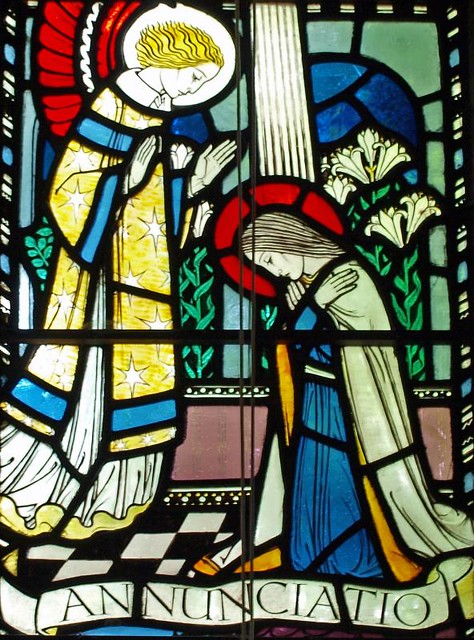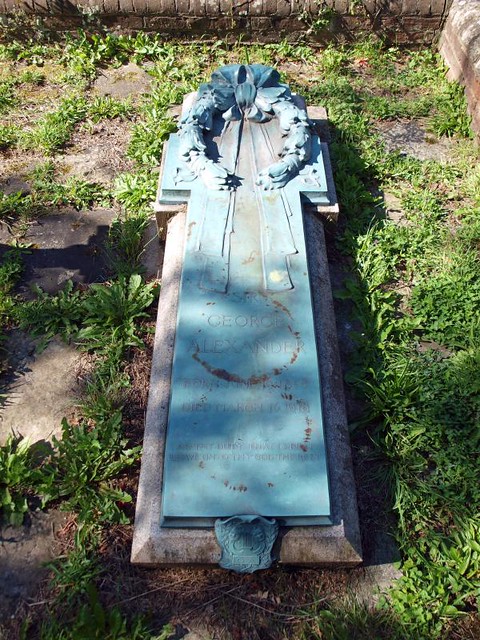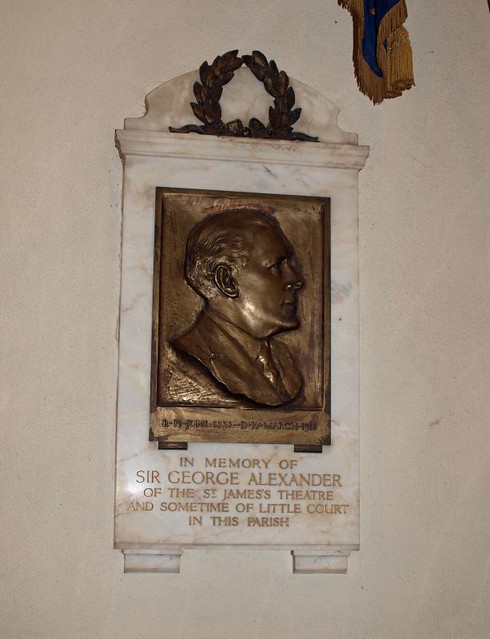ST BOTOLPH, 1 m. N of the village. The fragment of a larger building for which Maud, Countess of Salisbury, left money in 1424. Chancel and tower arch were pulled down in 1753. The wide nave was originally nave and S aisle. The outer walls are of squared flint with brick dressings. The windows have steep two-centred arches and elementary Perp tracery. - BENCHES. Some with poppyheads. - GALLERY. Remains of a Georgian gallery with Tuscan columns. - STAINED GLASS. Window in N wall, 1907, probably from Morris & Co. - PLATE. Chalice and Paten, 1798, Flagon, 1774. - MONUMENTS. Sir Jeremiah Snow d. 1704, standing wall monument with two putti and an urn at the top. - In the churchyard plain tomb of Nicholas Hawksmoor, the great architect, who lived at Porters Park and died there in 1736.
Shenley. Christopher Wren’s friend Nicholas Hawksmoor, when he lay dying by the Thames in London (where he had put his handiwork in the dome of St Paul’s and on the towers of Westminster Abbey), thought of this Hertfordshire hilltop village and asked that he might be buried here. He lies under one of the churchyard yews, having ended a long life of work in 1736. He was with Wren as his assistant all the time on St Paul’s, and finished the western towers of the Abbey which Wren had designed but could not finish. He was a prime mover in the building of 50 Queen Anne churches in London, helped Sir John Vanbrugh with Blenheim, built colleges at Oxford and Cambridge, and restored Beverley Minster. He was a modest man with an infinite grasp of detail, and had a great influence on the architecture of his time. His 200th anniversary was marked by an act of homage from the Royal Institute of British Architects, who were represented at the laying of a wreath on his tomb by the Dean and Chapter of St Paul’s.
The church where they laid him lost the tower and chancel soon after his burial here, and they have never been rebuilt. Only the nave and the aisle are left, and a homeless bell hangs from a low beam out in the open, where anyone may reach up to it, the other bells having been hung in the timber framework by the chapel in the centre of the village. A sundial tilted on the wall warns us that Time Flies, and a board tells of one whom Time carried off long since:
A parish clerk of voice most clear;
None Joseph Rogers could excel
In laying bricks or singing well.
Though snapped his line, laid by his rod,
We build for him our hopes in God.
By the pond on the green is a small round hut under a bee-hive roof, its windows barred with stones inscribed, “Do well and fear not; Be sober and vigilant,” timely warnings to the villagers of old that they would be behind these bars if they did not behave themselves, for this was the lock-up.
Within a mile is Salisbury Hall, a fine country house built by Sir John Cuttes in the 16th century and refashioned about 1700 by Sir Jeremiah Snow. The latter spared no pains to adorn it within and without, bringing from the walls of Sopwell Nunnery at St Albans a number of plaster medallions of Roman emperors, thought to be 15th century. Here they still are, above the panelling in the hall, looking like copies of old coins magnified to nine feet round. Charles II must have admired them, for he was a frequent visitor here.
The church where they laid him lost the tower and chancel soon after his burial here, and they have never been rebuilt. Only the nave and the aisle are left, and a homeless bell hangs from a low beam out in the open, where anyone may reach up to it, the other bells having been hung in the timber framework by the chapel in the centre of the village. A sundial tilted on the wall warns us that Time Flies, and a board tells of one whom Time carried off long since:
A parish clerk of voice most clear;
None Joseph Rogers could excel
In laying bricks or singing well.
Though snapped his line, laid by his rod,
We build for him our hopes in God.
By the pond on the green is a small round hut under a bee-hive roof, its windows barred with stones inscribed, “Do well and fear not; Be sober and vigilant,” timely warnings to the villagers of old that they would be behind these bars if they did not behave themselves, for this was the lock-up.
Within a mile is Salisbury Hall, a fine country house built by Sir John Cuttes in the 16th century and refashioned about 1700 by Sir Jeremiah Snow. The latter spared no pains to adorn it within and without, bringing from the walls of Sopwell Nunnery at St Albans a number of plaster medallions of Roman emperors, thought to be 15th century. Here they still are, above the panelling in the hall, looking like copies of old coins magnified to nine feet round. Charles II must have admired them, for he was a frequent visitor here.


























